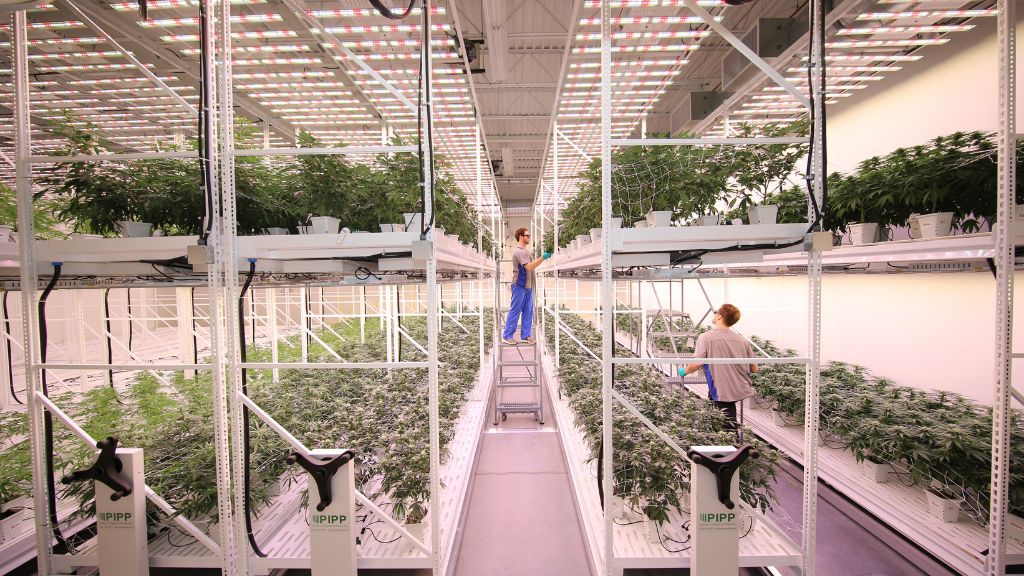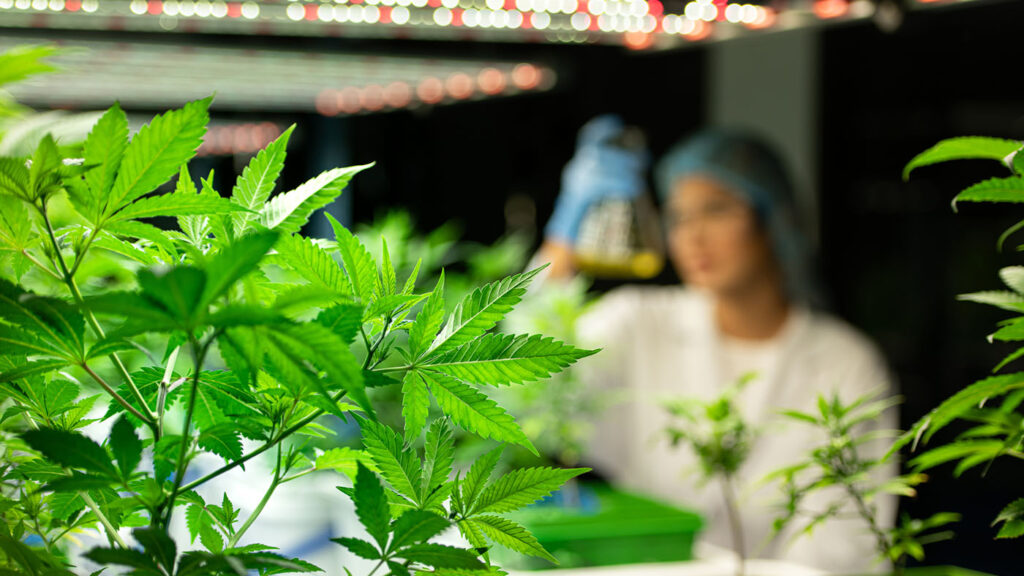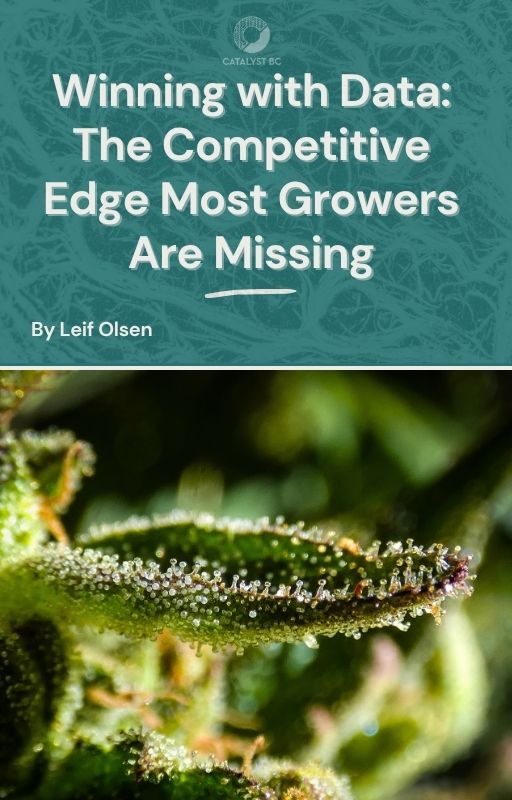Estimated reading time: 10 minutes
Table of contents
- Overview
- The Cannabis Industry: A Rapidly Growing Market
- What Is Vertical Farming?
- Why Vertical Farming for Cannabis?
- Challenges of Vertical Farming
- How Vertical Farming Consultants Can Help
- Getting Started with Vertical Farming
- Tips for Optimizing Vertical Farming
- Final Thoughts
- Related Resources
- Vertical Farming Benefits FAQs
- Free eBooks For Cannabis Business Success
- Latest Articles

Overview
The cannabis industry has seen remarkable growth in recent years, offering unparalleled opportunities for businesses and entrepreneurs alike. However, standing out in this competitive market can be daunting, especially with ever-changing techniques, regulations, and consumer preferences. One innovative approach to revolutionizing cannabis cultivation is vertical farming.
This cutting-edge method helps cultivators maximize space, optimize resources, and produce sustainable, high-quality crops year-round. Let’s explore vertical farming’s transformative impact on cannabis cultivation, its challenges, and how cannabis consultants like those at Catalyst BC can pave the way for success.
The Cannabis Industry: A Rapidly Growing Market
Cannabis has long been intertwined with human history, serving as both a cultural symbol and a natural remedy. Today, the cannabis industry stands at the forefront of innovation, driven by advancements in science, technology, and regulation.
The Rise of Medicinal Cannabis
Cannabis’ medical applications have been a key driver of its growth. Compounds like THC and CBD have demonstrated therapeutic benefits for conditions such as chronic pain, epilepsy, anxiety, and PTSD. This has spurred the development of diverse medical cannabis products, from oils and tinctures to edibles and topicals, tailored to meet patients’ needs.
The Emergence of Recreational Use
Beyond its medicinal value, cannabis is gaining acceptance for recreational use in various regions. Countries like Canada and Uruguay have legalized adult-use cannabis, providing safe, regulated avenues for consumers while bolstering local economies through tax revenues and job creation.
Innovation in Cannabis Cultivation
A booming market demands innovative solutions. From high-tech lighting systems to advanced cultivation techniques, cannabis businesses are embracing new methods to enhance product quality and efficiency. Among these, vertical farming stands out as a revolutionary approach for modern cultivators.
What Is Vertical Farming?
Vertical farming involves growing plants in vertically stacked layers or columns, often in controlled indoor environments. This method maximizes space utilization and resource efficiency, making it ideal for cannabis cultivation.
There are two primary approaches to vertical farming:
- Stacked Method: Plants are cultivated in stacked layers, with each layer featuring its own lighting, climate control, and irrigation system.
- True Vertical Method: Plants are grown along vertical structures, such as columns or towers, allowing for even greater space efficiency.
Why Vertical Farming for Cannabis?
Vertical farming offers numerous advantages that align perfectly with the demands of cannabis cultivation:
Space Optimization
Indoor cultivation space can be costly. Vertical farming enables businesses to produce significantly higher yields per square foot, making the most of their available space.
Resource Efficiency
With techniques like hydroponics and aeroponics, water and nutrient delivery is precise, minimizing waste. Recirculating systems further enhance sustainability by capturing and reusing water.
Controlled Ecosystems
Vertical farming provides cultivators with full control over environmental factors such as temperature, humidity, lighting, and CO₂ levels. This ensures consistent, high-quality yields year-round, regardless of external conditions.
Reduced Pest and Disease Risks
Enclosed systems minimize exposure to pests and pathogens, reducing the need for chemical pesticides. This results in cleaner, safer products for consumers.
Challenges of Vertical Farming
While vertical farming offers substantial benefits, it also presents challenges:
- High Initial Investment: Setting up a vertical farming system requires significant resources for infrastructure, technology, and climate control systems.
- Complex Systems: Efficient implementation demands expertise in system design, crop selection, and environmental monitoring.
How Vertical Farming Consultants Can Help
Navigating the complexities of vertical farming is no small feat. This is where consultants step in. These experts bring a wealth of knowledge and experience, offering tailored solutions to optimize operations and ensure long-term success.
Key Contributions of Consultants:
- System Design: Consultants help design efficient layouts, integrating lighting, irrigation, and climate control systems for maximum productivity.
- Crop Selection: They analyze market trends and guide businesses in selecting cannabis strains that align with consumer preferences and operational goals.
- Environmental Monitoring: Consultants oversee climate conditions, ensuring optimal parameters for healthy plant growth.
Partnering with specialists like Catalyst BC can save businesses time, reduce risks, and maximize profitability.
Getting Started with Vertical Farming
Ready to embrace vertical farming for cannabis cultivation? Here are some key steps:
- Define Your Goals: Identify your target market, financial constraints, and operational scale.
- Obtain Necessary Permits: Ensure compliance with local regulations to avoid legal pitfalls.
- Select Strains Wisely: Choose cannabis strains that thrive in vertical systems. Indica strains, for example, are often more suitable due to their shorter stature.
- Invest in Infrastructure: High-quality LED lighting and efficient irrigation systems are essential for success.
- Train Your Team: Equip staff with the knowledge and skills needed to manage systems effectively.
Tips for Optimizing Vertical Farming
- Start Small: Test the system on a smaller scale before expanding.
- Leverage Data: Use sensors and analytics to monitor environmental conditions and make informed adjustments.
- Seek Expert Guidance: Work with experienced consultants to navigate challenges and optimize performance.
Final Thoughts
As the cannabis industry continues to evolve, adopting innovative cultivation methods is essential for staying competitive. By maximizing space, conserving resources, and ensuring consistent quality, vertical farming offers a pathway to sustainable growth and profitability.
For businesses ready to take the plunge, partnering with experts like Catalyst BC ensures a smooth transition and long-term success. Whether you’re an experienced cultivator or new to the industry, vertical farming could be your key to thriving in this dynamic market.
Related Resources
Vertical Farming Benefits FAQs
It seems clear that vertical farming offers many benefits that traditional farming can’t match. They offer year-round food production regardless of climate or weather conditions. They are more efficient in their use of space, offer lower labor costs, minimize water use, and don’t contribute to soil degradation.
Vertical farming is designed for sustainable food production. It prevents deforestation, promotes resource recycling, limits spillage, and avoids chemical use.
Beyond providing fresh local produce, vertical agriculture could help increase food production and expand agricultural operations as the world’s population is projected to exceed 9 billion by 2050. And by that same year, two out of every three people are expected to live in urban areas.
The world’s largest vertical farm opened in Dubai in 2022. It produces more than one million kilograms of leafy greens per year, using 95 percent less water than traditional cultivation and saving 250 million liters of water per year.
Yes, vertical farming can be healthy because it can produce safe, fresh food without pesticides or other chemicals.
Cannabis is among the most profitable crops to grow in vertical farms. Leafy Greens, herbs, and microgreens also do very well. These crops are in high demand, grow quickly, and are relatively easy to produce.
CEA vertical farms typically have little need or even use for pesticides. By controlling the environment around crops, these systems keep out pests naturally – no need for chemical pesticides that can cause other problems down the line.
A vertical farmer will need to know plant science, plant nutrition, and integrated pest management. Beyond that, a basic understanding of machinery, mechanics, and engineering will also be critical.
The most popular form of vertical farming uses modular towers to grow crops in an aquaponic or hydroponic system. This allows growers to use a volume of space rather than just one plane.
Free eBooks For Cannabis Business Success
Latest Articles
- Cannabis 280E Compliance and COGS Optimization Expert StrategiesThe cannabis industry operates under a unique federal tax burden imposed by Internal Revenue Code (IRC) §280E. While state legalization has flourished, this provision, which denies deductions for ordinary business expenses of trades dealing in controlled substances, remains the single greatest threat to cannabis profitability.
- Owner’s Rep for Cannabis Dispensary Buildout: Expert Compliance & Project ManagementNavigating the highly-regulated world of a cannabis dispensary buildout requires specialized expertise beyond standard construction. The complexity of securing a final operating license, controlling costs, and preventing opening delays for a cannabis dispensary hinges on professional guidance. This is why securing an experienced Owner’s Rep for Cannabis Dispensary Buildout is a critical first step.
- The Indispensable Owner’s Rep for Cannabis Cultivation Facility Buildout: Expert Project Management to Prevent Cost OverrunsIn this high-stakes arena, the Owner’s Rep for Cannabis Cultivation Facility buildout is the crucial strategic partner. They are the expert professional who ensures the owner’s vision is translated into a successful, operational, and profitable reality.
- Cannabis Dispensary Compliance: Training, Inventory & ProfitabilityIn today’s regulated cannabis market, cannabis dispensary compliance is not optional—it is the foundation of a sustainable and profitable retail business. Every dispensary, from boutique shops to multi-state operators, must follow strict dispensary regulatory compliance standards, maintain accurate cannabis inventory management systems, and invest in ongoing cannabis dispensary training programs.
- Beyond Compliance: Implementing a Cannabis Dispensary Secret Shopper ProgramAs a cannabis retail owner, you operate in a high-stakes environment where federal prohibition meets state-regulated commerce. Your retail floor is not just a sales hub—it’s a constant target for mandatory inspection and the front line for brand differentiation. The most critical tool for navigating this complex reality is the professional, recurring Cannabis Secret Shopper program.
- Architects of the Cannabis Industry: What Defines An Expert Canna Consultant?An expert Canna Consultant is the strategic architect and operational engineer of a cannabis venture. They are specialized cannabis industry consultants who translate ambiguous legislation into profitable business processes.











